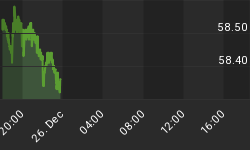Below is an excerpt from a commentary originally posted at www.speculative-investor.com on 1st February 2009.
Confusion due to delays
For many years we have been expecting inflation (growth in the supply of money) and nothing but inflation as far as the eye can see, but there have been times, such as the past 12 months, when we have felt more affinity with deflation forecasters than with most other inflation forecasters. The reason is that monetary inflation, when measured correctly, was minimal during the first half of 2008 and during the two preceding years, thus setting the stage for a US$ rebound and large price declines in the investments that had been bid up to astronomical heights.
Based on our observation, a lot of confusion on the inflation/deflation issue is caused by the lengthy and variable time delays between changes in the monetary trend and changes in prices. It will often be at least 2 years before the effects of a major change in the monetary trend start to become apparent in the prices of commodities and everyday goods and services. Consequently, during the first 2 years of a new monetary inflation cycle the outward evidence will often point to deflation (even though the inflation threat is rising), and for 2 years following the END of an inflation cycle it will seem as if the inflation threat is growing (even though it is falling).
As outlined below under "Current Situation", a new inflation cycle has almost certainly begun. However, with one notable exception the price-related evidence will probably favour the deflationists until at least 2010. The notable exception is the gold price. As we mentioned in a few commentaries last year, the gold price is the one price that's likely to commence a major upward trend in the early part of a new inflation cycle. The reason is that the gold market is dominated by large speculators who take positions in anticipation of the eventual/inevitable effects of the new monetary trend.
To further explain, the gold market is a very different 'kettle of fish' to other commodity markets. In the gold market the "commercials" are generally clueless because garden-variety commodity supply/demand fundamentals, such as changes in mine supply and industrial/commercial demand, have almost no effect on gold's price trend. Instead, gold's price trend is determined almost totally by investment demand, which is, in turn, driven by the outlook for things such as interest rates, credit spreads, financial asset valuations, money-supply growth, inflation expectations, and exchange rates. Moreover, the people who tend to have the most foresight when it comes to macro-economic phenomena are speculators who have survived and prospered in the financial markets over a long period of time.
In sum, even though the inflation threat has begun to increase the deflationists will probably look right for at least another year. They rarely look right, so we shouldn't begrudge them their relatively brief time in the sun.
Current Situation
We agree with much of the analysis presented by the well-known deflationists. The main point of contention revolves around the ability of the monetary authorities (the Fed and the Treasury in the US) to keep the total supply of money growing. Our view has been, and continues to be, that the Treasury-Fed tag team has the power to promulgate monetary inflation under almost any economic circumstances and will use this power. The bond market could eventually impose a practical limitation on the government's ability to inflate because increasing the money supply becomes counter-productive once the bond market begins to anticipate rapid currency depreciation, but if price-related evidence continues to favour the deflation view over the coming year then this limitation will not arise anytime soon.
The case is not yet closed, but the evidence presented to date supports our view. For example, the monetary base has expanded at an astronomical pace over the past five months. Mike Shedlock (http://globaleconomicanalysis.blogspot.com/) has attempted to counter this by pointing out that a sharp increase in the adjusted monetary base (AMB) also occurred during the early 1930s, but the St. Louis Fed's updated long-term chart of the AMB shows that the recent increase has been many times greater than anything during the 1930s. In any case, the overall monetary situation today could hardly be more different to the early 1930s. During the early 1930s the Fed increased the monetary base, but the total supply of money plunged. The current situation is reflected on the following chart, which shows that the year-over-year rate of increase in the True Money Supply (TMS) has reached 10%. Note that TMS does not include bank reserves held at the Fed; it represents money available for spending. The fact is that despite the deflation hysteria there is 10% more money in the US economy today than there was at this time last year.

We aren't offering a free trial subscription at this time, but free samples of our work (excerpts from our regular commentaries) can be viewed at: http://www.speculative-investor.com/new/freesamples.html.















